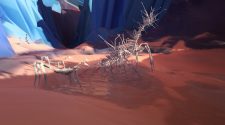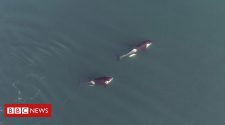Break out the cosmic confetti: Wonder Theory just turned one!
That’s right. It’s been a whole year since we kicked off this curiosity voyage, as Dustin Henderson from “Stranger Things” would say. There are few things greater than marveling together at the many splendors of the science world.
I’ve loved every minute of it so far, and it’s all thanks to you for joining us each step of the way. We appreciate your spending every Saturday with us and sharing your invaluable feedback.
If you’ve been enjoying this weekly space and science party, stay tuned. There is so much to look forward to as we dig into more discoveries and tour the secrets of the universe on this nonstop fascination cruise.
Grab a celebratory cupcake, and dive in to some of the intriguing treasures we’ve collected for you this week.
Across the universe
One meteor had the need for speed as it approached our planet from beyond the solar system — but luckily it didn’t reach the danger zone.
Interstellar space rocks are rarely observed in our solar system. This one was likely kicked out of its own planetary system before heading toward our corner of the universe.
Little is known about the meteor, including when and where it came from. Researchers want to retrieve part of it from the Pacific Ocean, which may not be possible. But it would be the “holy grail of interstellar objects” if they could.
Force of nature
Soaring temperatures caused an ice shelf the size of Los Angeles to collapse in Antarctica in March. The heat that triggered this event was caused by an atmospheric river, or a long moisture plume that pulls warm air from the tropics.
The concern now is that these intense sky rivers could lead to the collapse of the largest ice shelf on the Antarctic Peninsula, called Larsen C.
Scientists are still trying to determine the exact link between atmospheric rivers and the climate crisis, but one thing is certain: The collapse of Larsen C would spell bad news for the sea level around the planet.
Fantastic creatures
Congratulations are in order for everyone’s favorite hippo, Fiona. The social media darling of the Cincinnati Zoo is about to become a big sister. Fiona’s mother, Bibi, is expecting, and her “big bundle of joy” is due to arrive late this summer.
The news came as a shock because Fiona’s father died in 2017, and Bibi has been on birth control. But Tucker, who arrived at the zoo in 2021, has been “enamored” with Bibi ever since they met.
Fiona gained attention in 2017 after being born six weeks premature. The tiny hippo persevered, and her journey as she navigated those vulnerable early days captured the hearts of many.
Other worlds
Our solar system is an endless source of awe.
The wonder
A ghost flower has been found living in Ecuador’s cloud forest.
The stunning orange wildflower, called Gasteranthus extinctus, was thought to be extinct for decades before being rediscovered by researchers.
It was last seen in 1985 and earned its forlorn name because scientists didn’t see a future for the flower as the cloud forest experienced deforestation.
And while looking for this rare flower, researchers found nearly half a dozen plant species that are new to science — yet another reason to help save the unique cloud forest.
Explorations
Like what you’ve read? Oh, but there’s more. Sign up here to receive in your inbox the next edition of Wonder Theory, brought to you by CNN Space and Science writer Ashley Strickland, who finds wonder in planets beyond our solar system and discoveries from the ancient world.
™ & © 2022 Cable News Network, Inc., a WarnerMedia Company. All rights reserved.



















